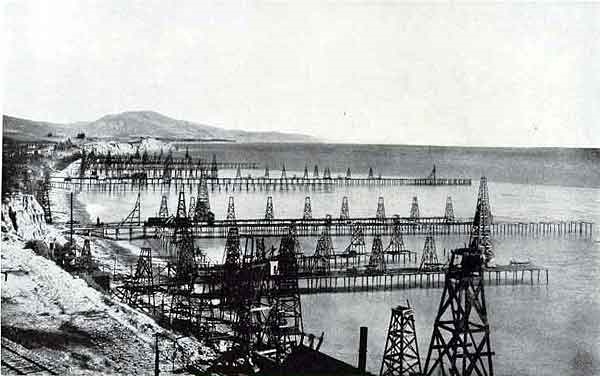by Bruce Wells | Nov 10, 2025 | This Week in Petroleum History
November 10, 1854 – Oil Seeps inspire First American Oil Well –
America’s petroleum industry began when a lumber company sold 105 acres along a northwestern Pennsylvania creek known for having natural oil seeps. New Hampshire entrepreneur George Bissell (1821-1884) bought the land from Brewer, Watson & Company because of his growing interest in “Rock Oil.” (more…)
by Bruce Wells | Nov 8, 2025 | Offshore History
The U.S. offshore drilling for oil began in the late-19th century on lakes and at the ends of Pacific Ocean piers. Until an innovative Kerr-McGee drilling platform in 1947, no offshore drilling company had ever risked drilling beyond the sight of land.

Many of the earliest offshore oil wells were drilled from piers at Summerland in Santa Barbara County, California. Circa 1901 photo by G.H. Eldridge courtesy National Oceanic & Atmospheric Administration.
In 1896, as enterprising businessmen pursued California’s prolific Summerland oilfield all the way to the beach, the lure of offshore production enticed Henry L. Williams and his associates to build a pier 300 feet out into the Pacific — and mount a standard cable-tool rig on it. (more…)


